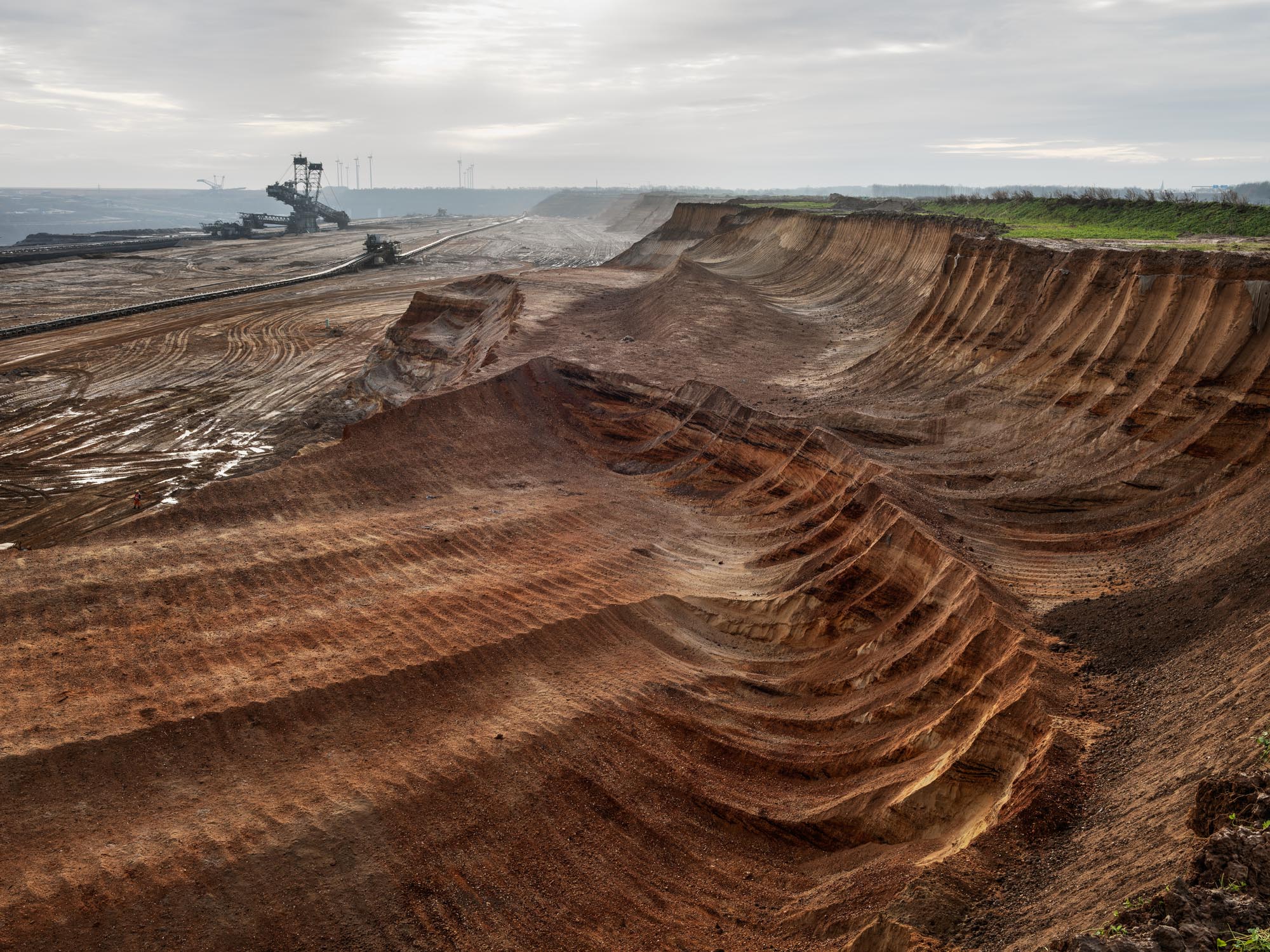In an elevator inside downtown Vancouver’s Telus Garden, a news item flashes on the TV. “WWF says 60 per cent of the world’s wildlife has been wiped out since 1970.” It is apt timing for such a fact, as just minutes before, renowned Canadian photographer Edward Burtynsky had participated in a Nature Conservancy of Canada panel discussion within this building’s walls, and shown stirring images from his latest project: a collaboration with Jennifer Baichwal and Nicholas de Pencier called Anthropocene.
Popularized by scientists and social critics alike, “Anthropocene” refers to our current geological time, wherein literally everything on our planet has been irrevocably shaped by man. It’s worth noting that the concept is an informal one that has yet to be unanimously adopted by the scientific community, but that hasn’t stopped Burtynsky from connecting the dots in the eternal conflict between human and nature. Since the mid-1980s, the 63-year-old Toronto resident has visited thousands of industrial sites, taking photos and printing massive images that starkly illustrate just how much people have altered the landscape. If there’s a theme that runs through Burtynsky’s work, it’s scale. Even the largest ore carrier seems ant-like within a cavernous open-pit mine.
Like the complex, interdependent industrial sites he photographs, Burtynsky’s career has been carefully planned and executed since he graduated from the photography program at Ryerson Polytechnic Institute (now Ryerson University) in 1982. “I was the beneficiary of an arts grant around that time,” he says, “which gave me some breathing space to create a body of work that I could both display and sell.”
His vision had fully crystallized one day in 1981 when he made a wrong turn on a road in the Coal Belt of Eastern Pennsylvania. “At the time, my work was focused on pristine, natural landscapes,” he explains, speaking one-on-one. “But then I discovered this massive coal mine where literally everything had been touched by man.” In other words, an Anthropocene landscape.
One of Burtynsky’s most well-known projects was a China series, which became the basis for a 2006 documentary film with Baichwal (it also became a book and a large touring exhibition). “After visiting China, I returned with an enormous sense of dread, thinking, ‘How on earth can we find the resources to support 1.5 billion people, all of whom want to have the same standard of living as we enjoy?’ They’ve taken everything that we’ve done in the West and amplified it a hundred times.” He recalls driving down the east coast of China through a landscape so polluted that “the trees were dead; the air was poisoned, and the rivers ran black. I promised I’d pay $20 to the first person who spotted a bird, but no one did.”
With Anthropocene, the photographer seems to begrudgingly admit that the world is a screwed-up place. Previously, his carefully-worded statements concerning his art were mostly neutral, invoking visitors to make up their own minds. But then he trained his camera on the denuded cut-blocks of Southern Vancouver Island, where less than 10 per cent of old-growth rainforest remains. To publicize this, two massive Burtynsky murals of vivid green understory greet visitors to Indigo’s new Robson Street flagship store in Vancouver. Burtynsky and Indigo are donating $25,000 each to the Ancient Forest Alliance for its campaign to protect old-growth forests in British Columbia.
Between projects, Burtynsky relaxes at a vacation property on Ontario’s rugged Niagara Escarpment—but he doesn’t stay still for long. “I’m pretty sure my next project is going to be in Africa,” he says. “Chinese investment is rapidly changing the entire economy.” And, without doubt, the natural ecosystem, too.











